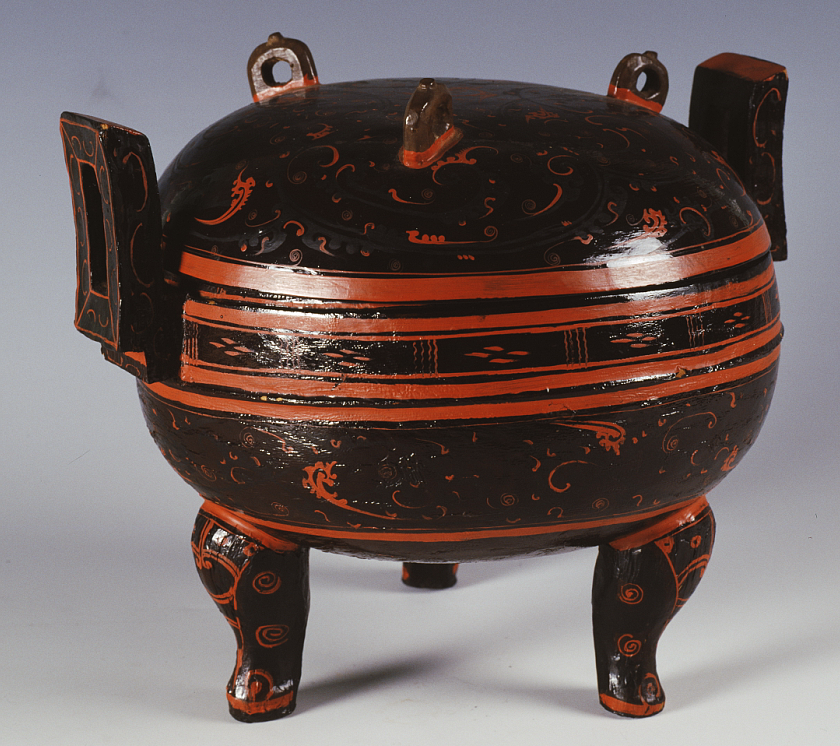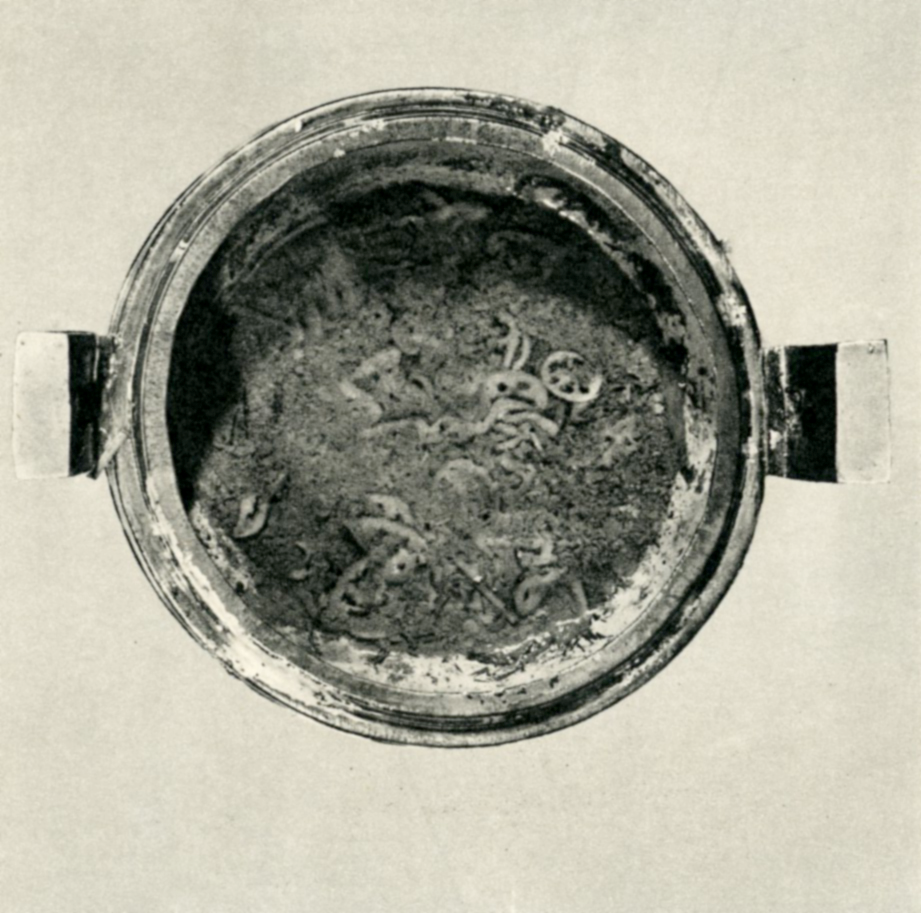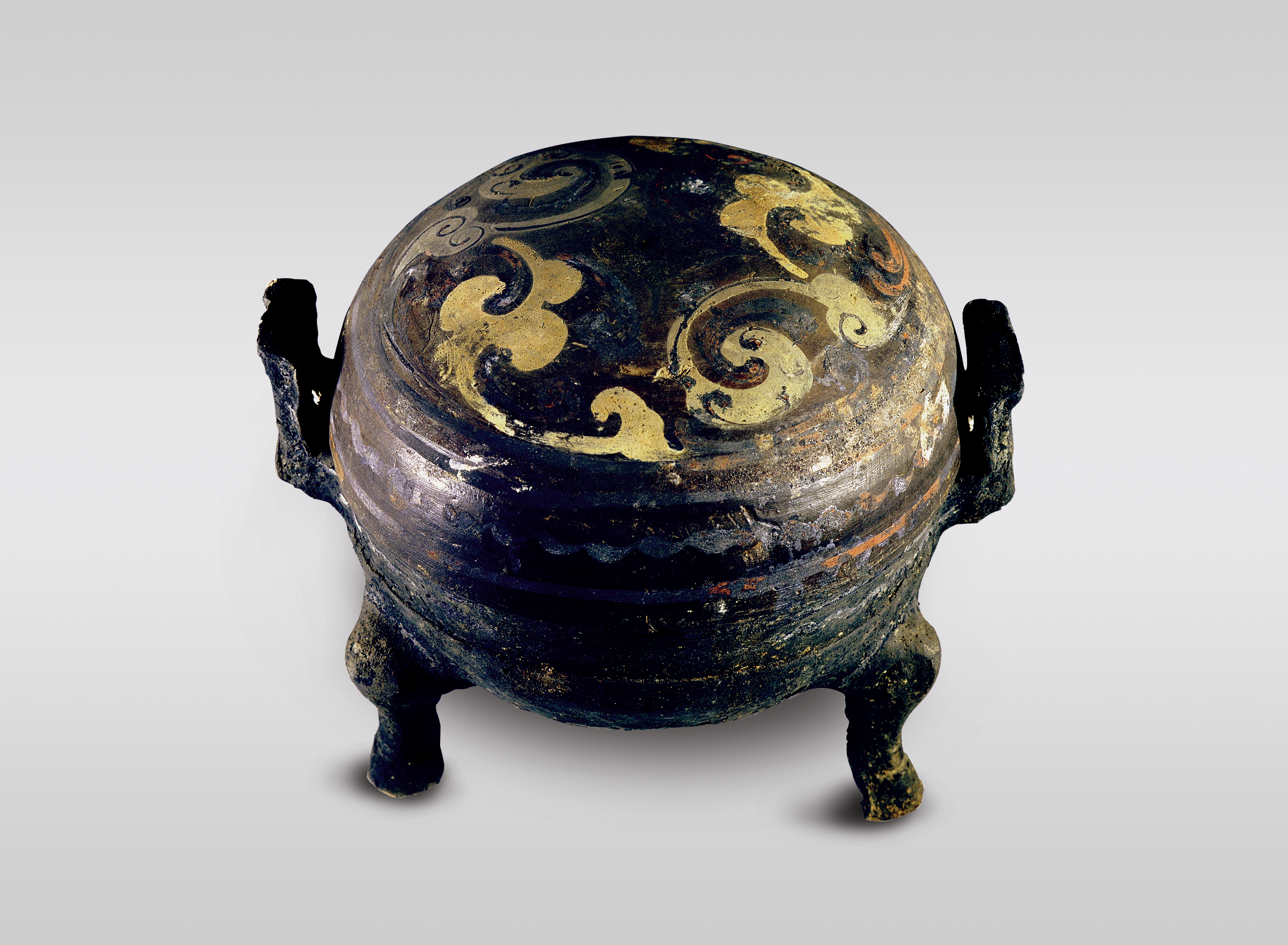Lacquer Tripod with Cloud Design

Western Han Dynasty (206 BC-25 AD)
Height: 24cm; Diameter at mouth: 24.7cm
Excavated from Han Tomb No.1 at Mawangdui, Changsha in 1972
This food container is made on a thick wooden base that was shaped by trimming. Its slightly expanded mouth acts as a snap fastener with the lid. It features a swelling belly, a world-like bottom, two upright loop handles, three paw-like cabriole legs, and a dome-shaped lid with three knobs. The surface is coated with black lacquer and painted with phoenix and cloud designs in vermilion and grayish green colors. The smooth and fluent lines of the design evoke a romantic air. The interior of the vessel is coated with vermilion lacquer.
Seven lacquer ding of the same size and shape were excavated from Tomb No.1. One ding still contained a small amount of soup and slices of lotus root, which after 2,100 years were clearly discernible. A more puzzling thing is that the slices of lotus root continuously diminished with each move of the tripod and with each added minute when they were exposed to air, and by the time the tripod was moved to the museum the slices had all miraculously disappeared. Why then had these slices of lotus root remained undecayed after being soaked in liquid for over 2,100 years but disappeared soon after they were unearthed? Experts explained that the fibers inside those clearly visible slices of lotus root when unearthed had in fact decayed, leaving behind only some seemingly complete external forms. The oxidization process after they were unearthed and the unavoidable shake when the tripod was taken out caused the quick dissolution of these slices of lotus root. This indicates that the Changsha region has very rarely been hit by big earthquakes. Otherwise, if there have been frequent earthquakes (with an occasional big one), either the tripod would have collapsed or the slices of lotus root would have been dissolved long ago.

深入探索
About Ding
Ding (tripod) in ancient times was considered a symbol of social status and power “to make clear the difference between the noble and the humble, the dominant and the subordinate”. From the Xia Dynasty to the two Han Dynasties, ding, whether bronze or lacquer, was a symbol of national strength and power. There was a whole system for using the ding: normally the Son of Heaven (the emperor) could use nine ding, dukes and princes seven, senior state officials five and scholar-officials three. Nobody dared to overstep this rule. This lacquer ding with cloud design was heavy and exquisite, with the rim and the bottom trimmed out of a log first and then the inside chiseled out. Many pieces of exquisite lacquer ding were unearthed from the Han tombs at Mawangdui. Tomb No.1 alone yielded seven pieces of ding. From this we can know the extremely high social status of the occupant of the tomb. After the Han Dynasty, ding gradually became a cooking vessel for people’s daily use.

 Painted Pottery Ding
Painted Pottery Ding
Western Han Dynasty (206 BC-25 AD)
Excavated from Han Tomb No.1 at Mawangdui, Changsha in 1972
From the collection of Hunan Provincial Museum
 Bronze Ding with inscription of “First Year of Changsha”
Bronze Ding with inscription of “First Year of Changsha”
Western Han Dynasty (206 BC-25 AD)
Excavated from Gui Garden, Changsha, Hunan Province in 1949
From the collection of Hunan Provincial Museum



